Anthea Hamilton is a force to be reckoned with at Thomas Dane Gallery
The Turner Prize nominee transforms the London gallery with soft sculptures, tiled furniture and immersive wall treatments in her incisive exhibition ‘The Prude’
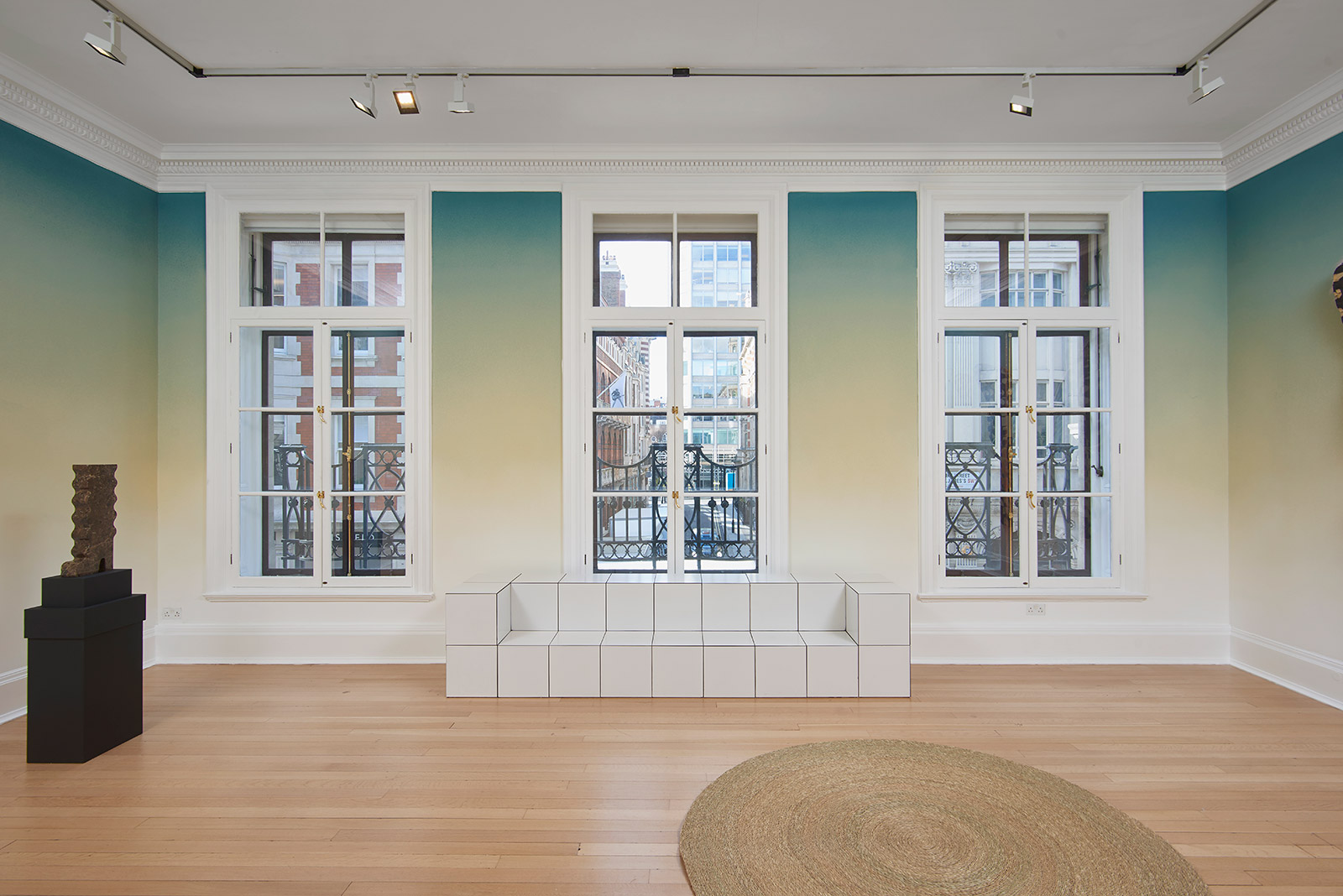
The dancing badger is nowhere to be seen. Missing too is the gold and white bird with the tie-dye socks. The install at Mayfair’s Thomas Dane Gallery is well under the way. I tip-toe through wet paint and plastic sheeting. We speak over the metallic blast of drills. Maybe the animals of ‘The Squash’ will join us for the opening party.
Anthea Hamilton is embarking on her first high-profile solo exhibition in a commercial London gallery. A native south Londoner who graduated from the Royal College of Art, Hamilton spent much of her twenties and thirties working independently and below the radar before a series of strong and provocative shows culminated in her being shortlisted for the 2016 Turner Prize.
While Hamilton did not win the Turner Prize, her show proved to be the most popular of the shortlisted works. Her huge sculpture of a pair of hands digging into a pair buttocks, the parted legs acting as a doorway, became the selfie shot of the summer – an example of a piece of contemporary art reaching far out beyond the contemporary art scene.
A year later, in 2017, Hamilton, who is 41, became the first black woman to be awarded a commission to create a work for Tate Britain's Duveen Galleries – a 100-yard neo-classical sculpture court. Alex Farquharson, Tate Britain’s director, said at the time: ‘Anthea Hamilton has made a unique contribution to British and international art with her visually playful and thoughtful works.’
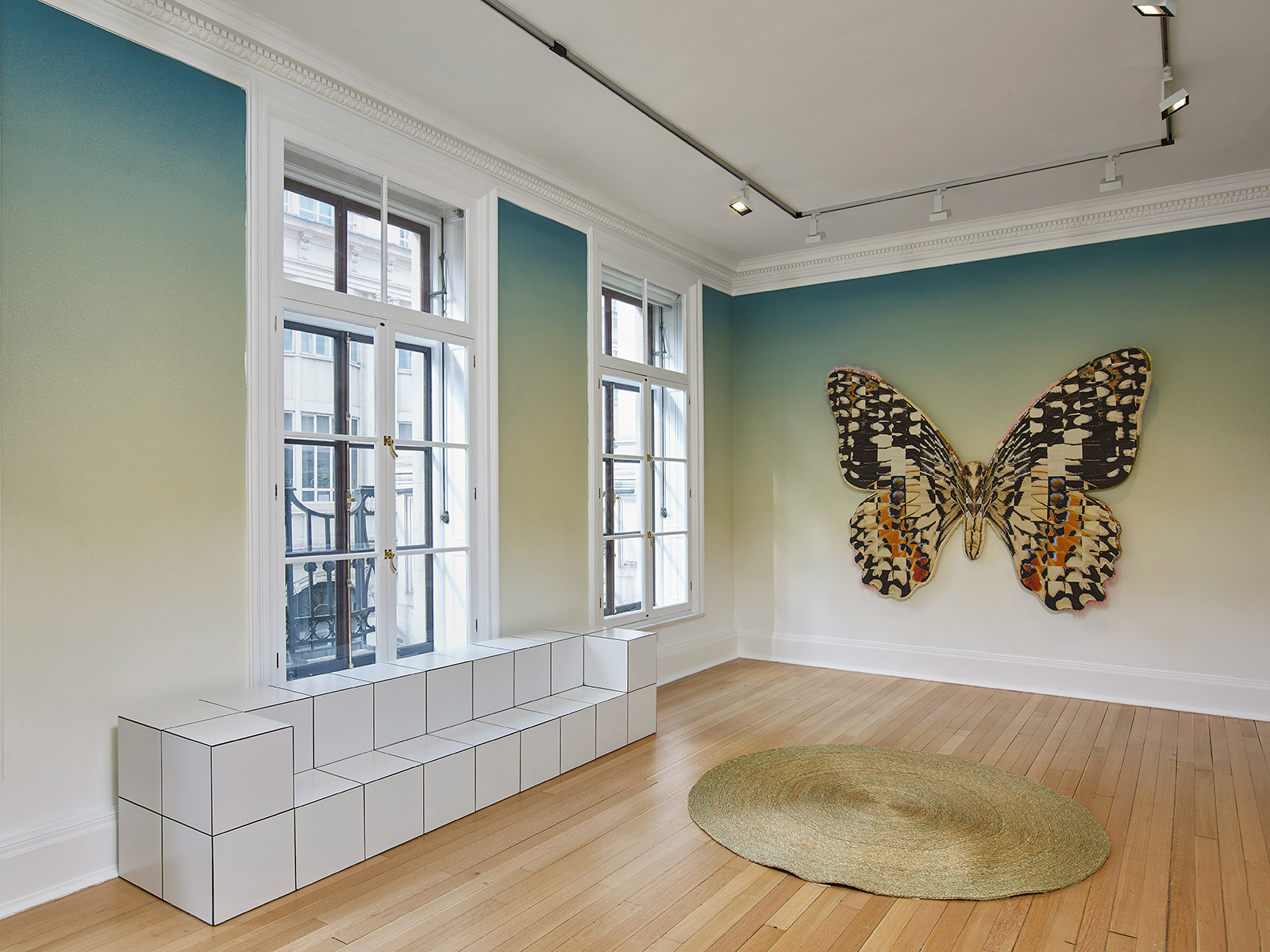
Playful is the word. Hamilton used mime artists while exhibiting at the Frieze art fair in New York in 2016. At the British Art Show in the same year, she installed a live ant farm in which cut-out photographic portraits were provocatively stationed.
But the Duveen Galleries is a different stage entirely. It’s a big space, and a make or break commission, spoken of as a bellwether for the ascent or plight of the artists chosen to use it as a canvas. It’s fair to say Hamilton’s use of The Duveen was a success. For an exhibition titled ‘The Squash’, she referenced the early 20th-century French writer and dramatist Antonin Artaud and his call for the ‘physical knowledge of images’, employing performers to act out dramas in relation to sculptures she installed within the Duveen. The badger and the gold-white bird were there, alongside many other characters.
Now, at Thomas Dane Gallery, Hamilton is being pulled into the warm embrace of the high-end and very monied London art world. This is an artist who has often existed at the fringes of the industry, and once said to Frieze: ‘I’m not sure I believe the possession of works of art is necessary.’ The London gallery has only come calling fairly recently. Her response to their attention is fascinating.
The first thing one sees when entering the exhibition, on specially-made walls, is a huge drawing of a smiling black woman as she walks into what appears to be a meshed prison-like structure. The etching would, if it appeared on the street outside, almost certainly be decried as being racist before being wiped clean. Here, it is titled The Prude.
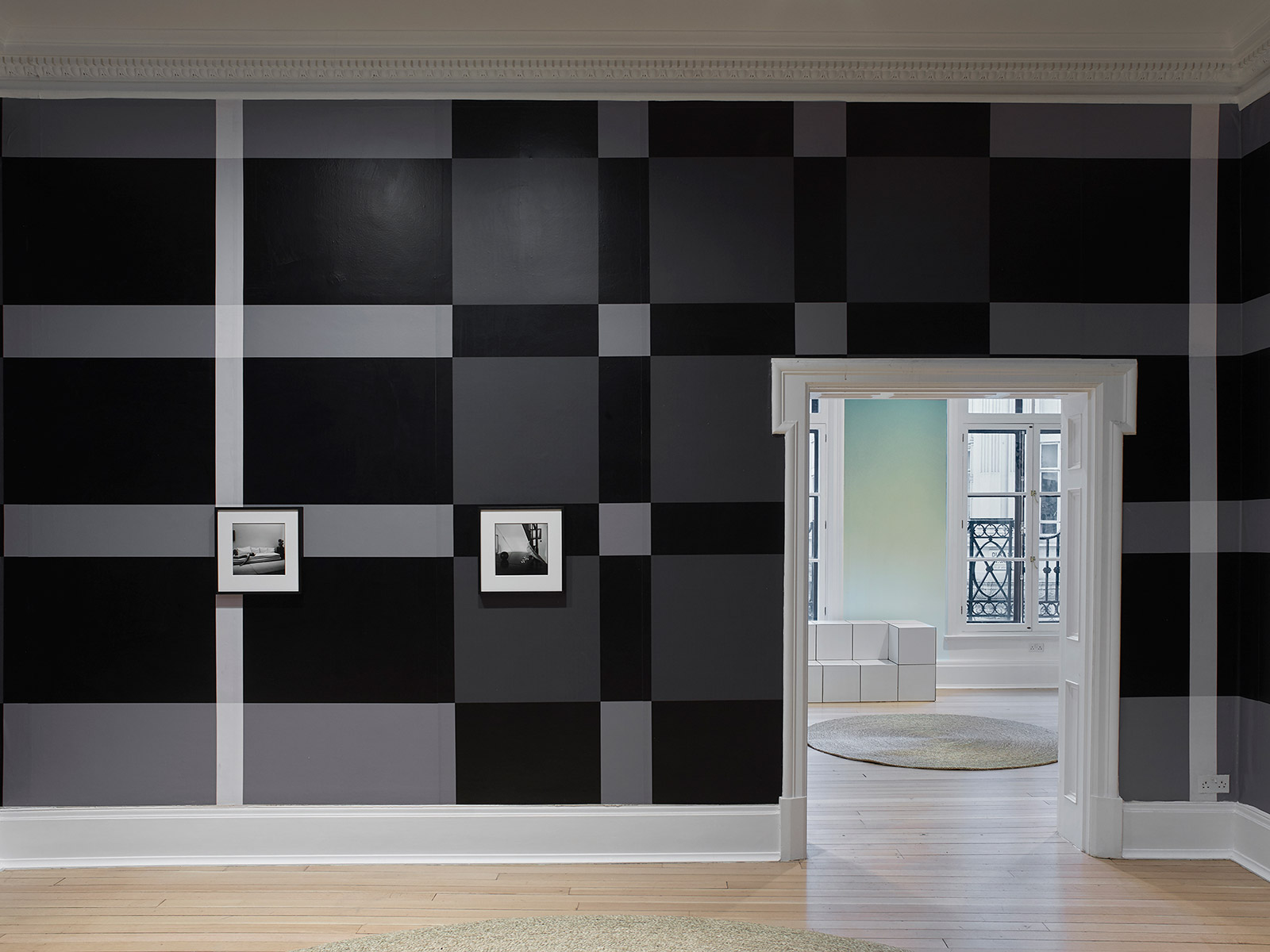
Amid the gallery, in which we too are encased, are soft sculptures of the insects, moths and butterflies that Hamilton originally showed at the Vienna Secession. These are juxtaposed with pieces of ‘furniture’ – sculptures made from geometric tile constructions similar to those from the Tate Duveen installation.
Hamilton, to be blunt, wouldn’t be the first artist to turn insects into accessories (look at Damien Hirst). Or, for that matter, take what could be an architectural detail of a swimming pool and place it in a gallery (look at Marcel Duchamp). But the presence of The Prude seems to transform the dialogue of the entire exhibition.
Although Hamilton wasn’t available for interview when I toured the exhibition, I asked her to explain the presence of the etching to me. The image, she tells me over email, is from 2000 – a cover produced by the veteran American cartoonist Robert Crumb for Fate magazine. It was then used as the lead image for Crumb’s exhibition ‘De l’Underground à la Genèse’ at Musée d'Art Moderne in Paris.
The character, I’m told, was originally called Sasquatch Lady; Sasquatch being another term for Bigfoot, the almost mythical hair-covered, primate-like creature that walked like a human being and was said to be a between 6 and 15 feet. ‘I was living in Paris at the time of that show and Crumb’s drawing was postered all over the Metro public transport,’ Hamilton says. ‘Her confident look kept catching my eye.’ The presence of Crumb’s work is further complicated by the artist’s own on-the-record prejudice towards women and African-Americans.
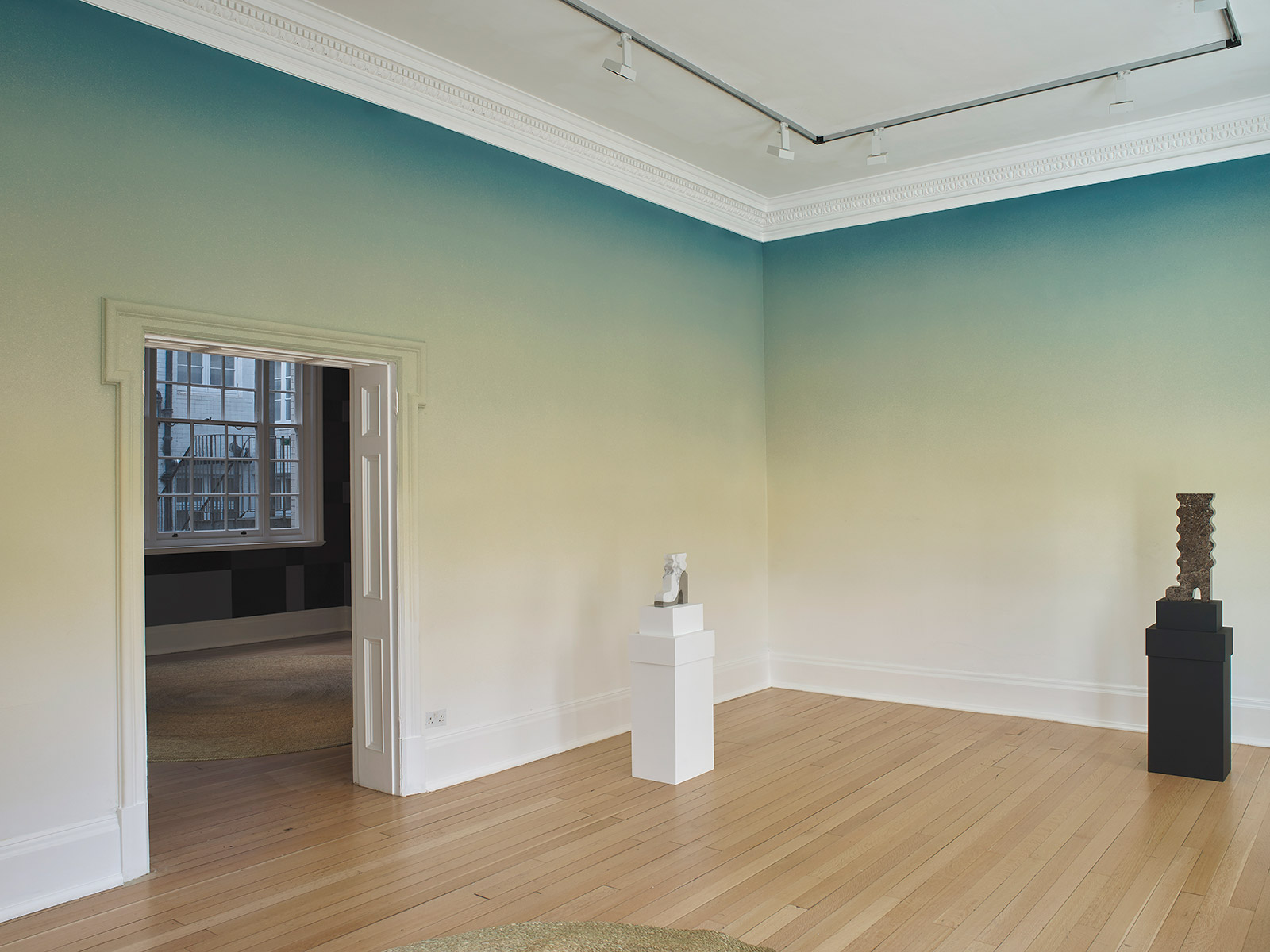
In a 2010 essay exploring blackness in the American psyche through the comics of Winsor McCay and Crumb, the academic Edward Shannon notes a direct quote from the latter regarding his insecurity towards women: ‘I have these hostilities toward women. I admit it – it’s out there in the open, it’s very strong. It ruthlessly forces itself out of me onto the paper. I hope that somehow revealing that truth about myself is helpful... but I have to do it.’
Shannon also notes how Crumb’s work is filled with derogatory images of African-Americans. The artist portrays black women in particular as essentially indigenous and tribal. Shannon refers to the creation of a Crumb character called Angelfood McSpade, who made her comics debut in the second issue of Zap Comix in 1968. She is depicted as a large, bare-breasted tribeswoman, dressed in a skirt made out of palm tree leaves, drawn with large lips and golden rings around her neck and in her ears. Her name references angel food cake and the racial slur ‘spade’.
So why has Hamilton used such a key moment of visibility to reference, draw attention to, and, in some ways, repurpose Crumb’s work in such a monumental way? ‘My relationship to Robert Crumb’s representations of the female is complex – it couldn’t be any other way,’ Hamilton tells me. ‘This image has the highly economic capacity to do so many different things – personally, historically, culturally, and on and on – yet all the time her smile doesn’t waver. Formally, in The Prude, her dynamic pose, her as a figure in motion, animates the static walls, pulls them into action, carrying the complexity of the image as a cultural object around the space with it, creating a space for the reading of the building, a gallery, and the three-dimensional works on show.’
Hamilton has had a long association with Crumb’s work. ‘I had previously used this Robert Crumb image for a wallpaper and across the 12m high façade of La Sucrière building for the 13th Lyon Biennale in 2015,’ she says. ‘I wondered how the image might function some four years later. How much have the viewing conditions – and by that I mean a wider conversation of culture, politics, nostalgia and how we look back to earlier periods – changed the way this image functions.’
It’s a hard, knotty and fascinating question, displayed with a confidence, wit and vim that is nothing short of audacious; the signature, maybe, of one of the most discursive – and important – contemporary artists working in Britain today.
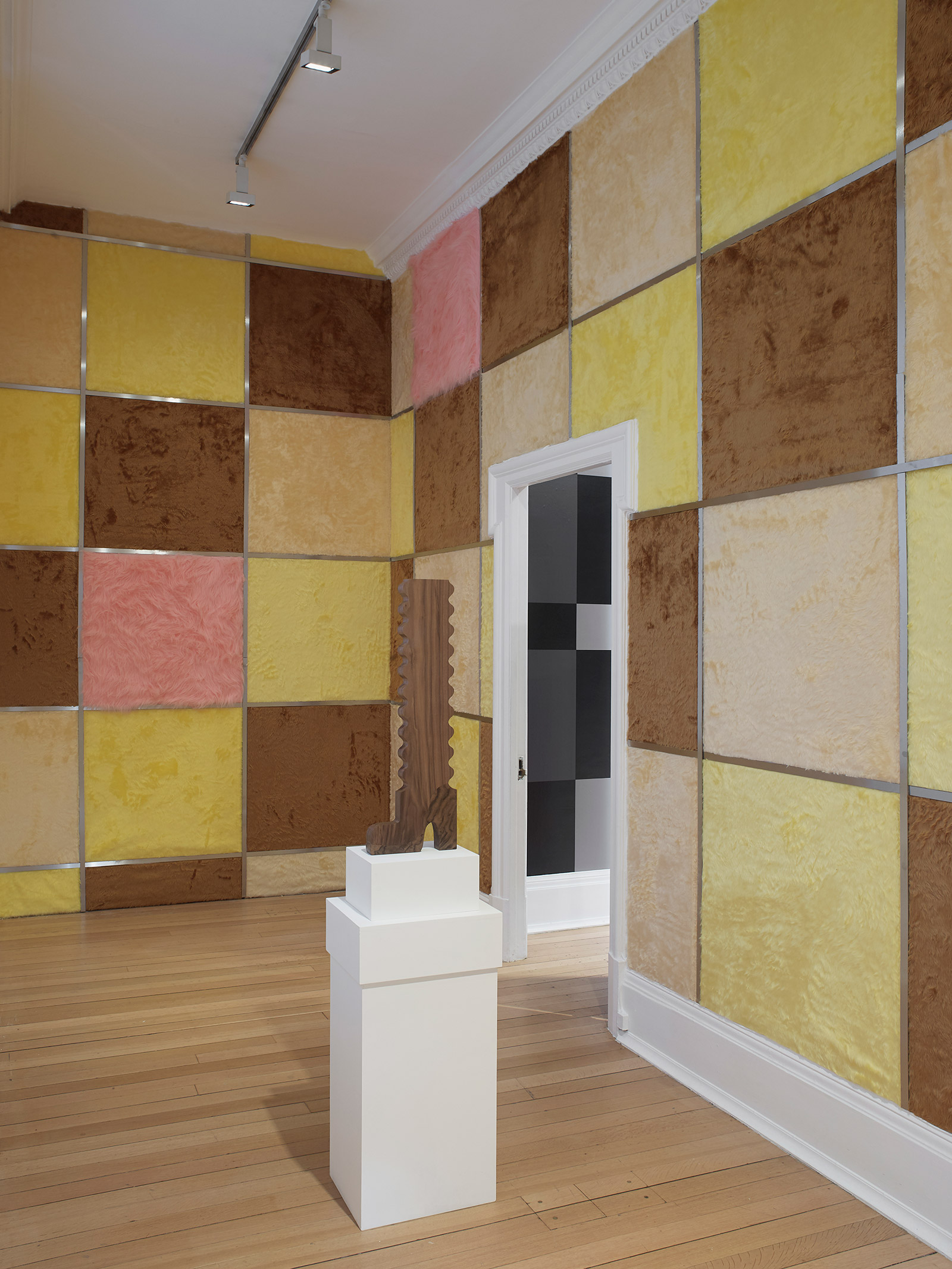
INFORMATION
‘The Prude’ is on view from 8 March – 18 May. For more information, visit the Thomas Dane Gallery website
ADDRESS
Receive our daily digest of inspiration, escapism and design stories from around the world direct to your inbox.
Thomas Dane Gallery
3 and 11 Duke Street St James’s
London SW1Y 6BN
Tom Seymour is an award-winning journalist, lecturer, strategist and curator. Before pursuing his freelance career, he was Senior Editor for CHANEL Arts & Culture. He has also worked at The Art Newspaper, University of the Arts London and the British Journal of Photography and i-D. He has published in print for The Guardian, The Observer, The New York Times, The Financial Times and Telegraph among others. He won Writer of the Year in 2020 and Specialist Writer of the Year in 2019 and 2021 at the PPA Awards for his work with The Royal Photographic Society. In 2017, Tom worked with Sian Davey to co-create Together, an amalgam of photography and writing which exhibited at London’s National Portrait Gallery.
-
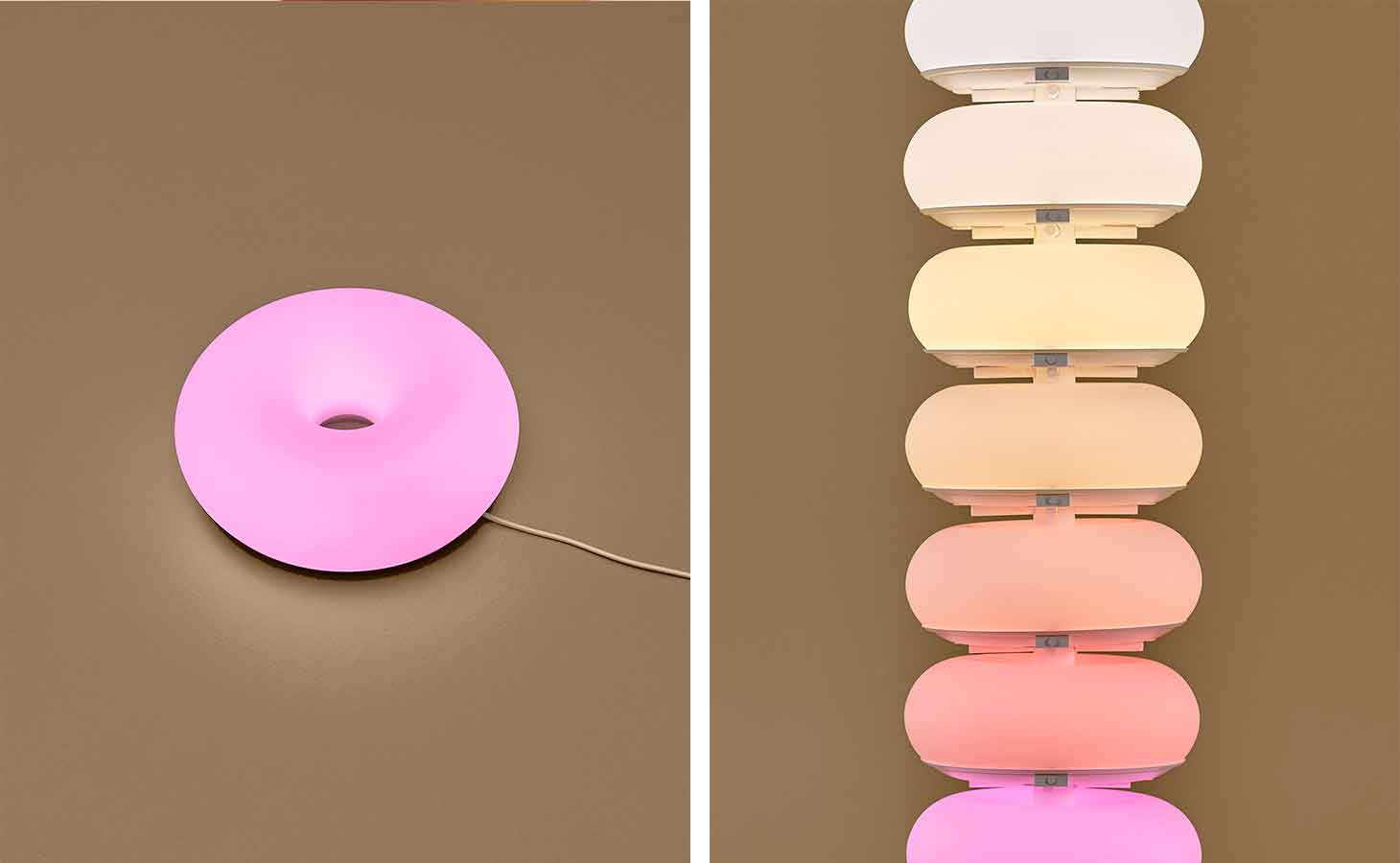 Sabine Marcelis has revisited her Ikea lamp and it’s a colourful marvel
Sabine Marcelis has revisited her Ikea lamp and it’s a colourful marvelSabine Marcelis’ ‘Varmblixt’ lamp for Ikea returns in a new colourful, high-tech guise
-
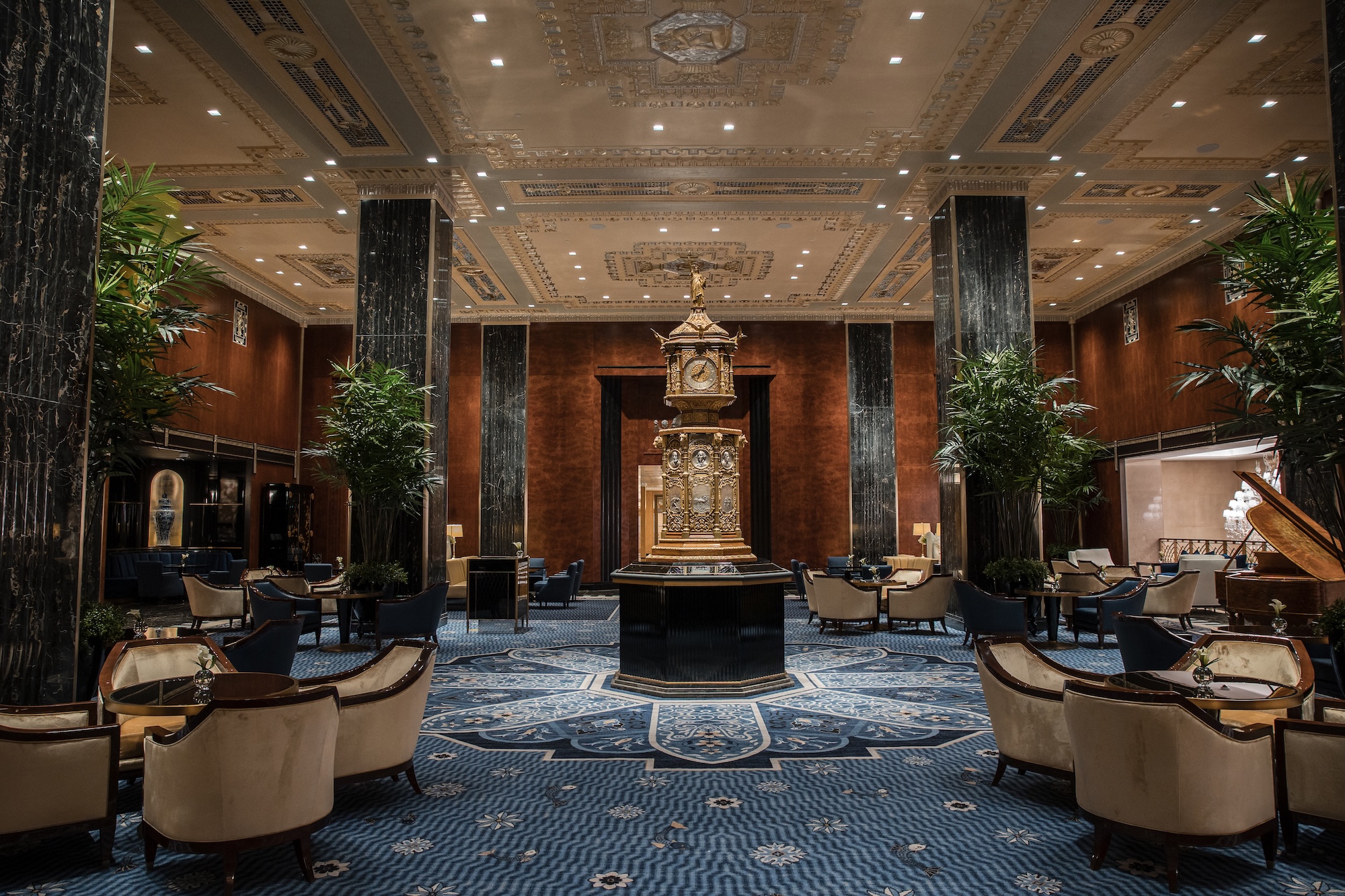 Is the Waldorf Astoria New York the ‘greatest of them all’? Here’s our review
Is the Waldorf Astoria New York the ‘greatest of them all’? Here’s our reviewAfter a multi-billion-dollar overhaul, New York’s legendary grand dame is back in business
-
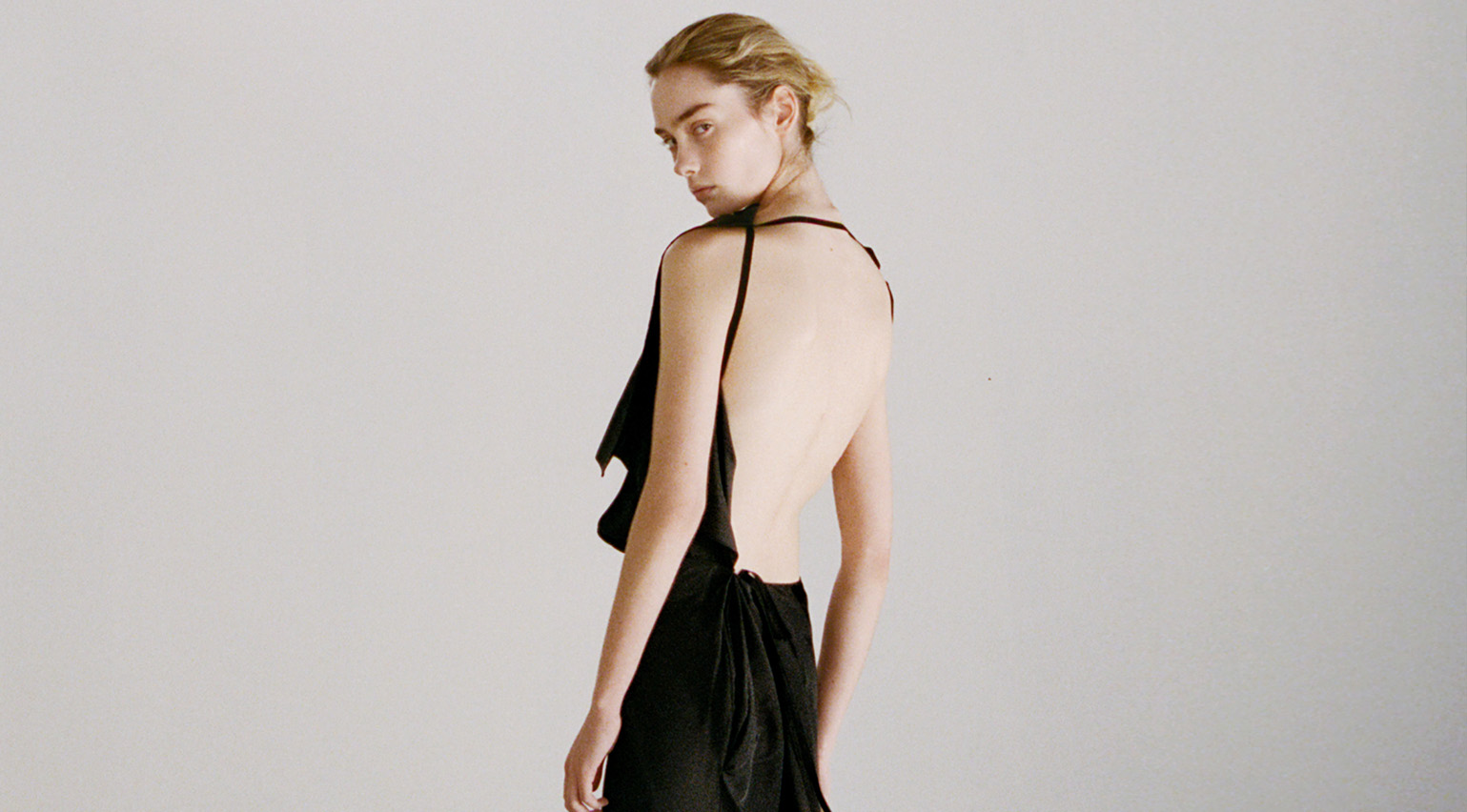 Colleen Allen’s poetic womenswear is made for the modern-day witch
Colleen Allen’s poetic womenswear is made for the modern-day witchAllen is one of New York’s brightest young fashion stars. As part of Wallpaper’s Uprising column, Orla Brennan meets the American designer to talk femininity, witchcraft and the transformative experience of dressing up
-
 Out of office: The Wallpaper* editors’ picks of the week
Out of office: The Wallpaper* editors’ picks of the week'Tis the season for eating and drinking, and the Wallpaper* team embraced it wholeheartedly this week. Elsewhere: the best spot in Milan for clothing repairs and outdoor swimming in December
-
 Out of office: The Wallpaper* editors’ picks of the week
Out of office: The Wallpaper* editors’ picks of the weekFar from slowing down for the festive season, the Wallpaper* team is in full swing, hopping from events to openings this week. Sometimes work can feel like play – and we also had time for some festive cocktails and cinematic releases
-
 The Barbican is undergoing a huge revamp. Here’s what we know
The Barbican is undergoing a huge revamp. Here’s what we knowThe Barbican Centre is set to close in June 2028 for a year as part of a huge restoration plan to future-proof the brutalist Grade II-listed site
-
 Out of office: The Wallpaper* editors’ picks of the week
Out of office: The Wallpaper* editors’ picks of the weekIt’s wet, windy and wintry and, this week, the Wallpaper* team craved moments of escape. We found it in memories of the Mediterranean, flavours of Mexico, and immersions in the worlds of music and art
-
 Each mundane object tells a story at Pace’s tribute to the everyday
Each mundane object tells a story at Pace’s tribute to the everydayIn a group exhibition, ‘Monument to the Unimportant’, artists give the seemingly insignificant – from discarded clothes to weeds in cracks – a longer look
-
 Out of office: The Wallpaper* editors’ picks of the week
Out of office: The Wallpaper* editors’ picks of the weekThis week, the Wallpaper* team had its finger on the pulse of architecture, interiors and fashion – while also scooping the latest on the Radiohead reunion and London’s buzziest pizza
-
 Out of office: The Wallpaper* editors’ picks of the week
Out of office: The Wallpaper* editors’ picks of the weekIt’s been a week of escapism: daydreams of Ghana sparked by lively local projects, glimpses of Tokyo on nostalgic film rolls, and a charming foray into the heart of Christmas as the festive season kicks off in earnest
-
 Wes Anderson at the Design Museum celebrates an obsessive attention to detail
Wes Anderson at the Design Museum celebrates an obsessive attention to detail‘Wes Anderson: The Archives’ pays tribute to the American film director’s career – expect props and puppets aplenty in this comprehensive London retrospective